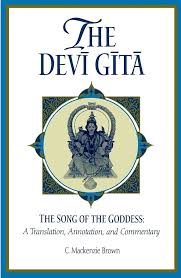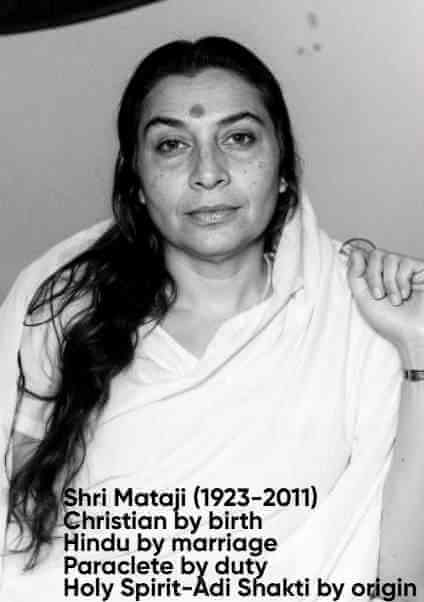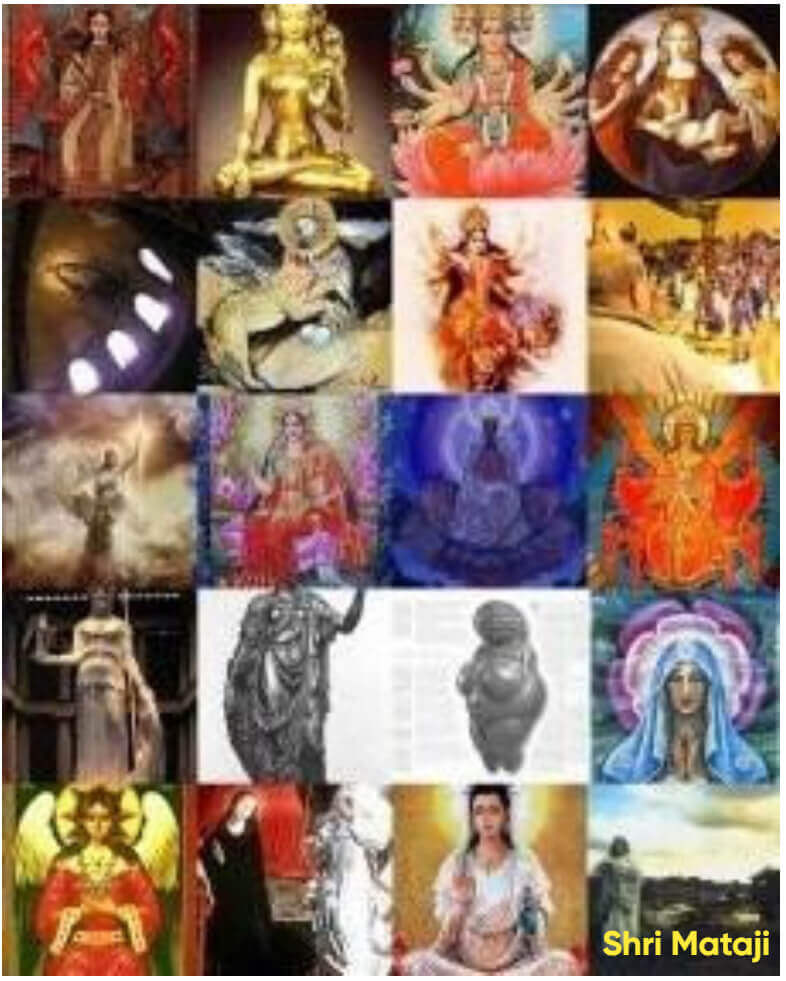The Devi Gita: Philosophical Clarity and the Realization of the Divine Feminine as Supreme Reality
This page presents the Devi Gita, a sacred revelation from the Devi Bhagavatam in which the Divine Mother speaks directly to Himalaya. She declares herself as the Supreme Brahman, pure consciousness before creation, and describes the evolution of the causal, subtle, and gross bodies. The Devi Gita balances bhakti and jnana, offering clarity on spiritual paradoxes and the nature of liberation. It outlines four grades of devotion, culminating in the supreme state of unity and loving service. The Goddess insists that true knowledge can be attained while living, and that devotion without knowledge leads only to temporary paradise. Rooted in Shaktism and resonating with Vedantic insight, the Devi Gita is a luminous guide to Self-realization and the eternal feminine principle.
Table of Contents
I. Introduction

In the vast and diverse landscape of Hindu sacred literature, the Gitas occupy a special place as profound philosophical treatises that offer guidance on the nature of reality, the self, and the path to liberation. While the Bhagavad Gita is undoubtedly the most renowned of these, a rich tradition of other Gitas exists, each with its unique perspective and emphasis. Among these, the Devi Gita, or "Song of the Goddess," stands out as a work of exceptional philosophical clarity and spiritual depth. Embedded within the Devi Bhagavata Purana, a major text of the Shakta tradition, the Devi Gita presents a powerful and uncompromising vision of the Divine Feminine as the ultimate reality, the source of all creation, and the very essence of Brahman. This paper will argue that the Devi Gita's unique philosophical clarity, its successful integration of Advaita Vedanta and Shaktism, and its unambiguous presentation of the Divine Feminine as the ultimate reality (Brahman) contribute to its potential superiority over other Gitas in Hindu literature. By examining the text's core teachings, its comparative standing within the Gita tradition, and the scholarly analysis of its philosophical contributions, this paper will demonstrate that the Devi Gita offers a uniquely direct and accessible path to spiritual realization, one that resonates with profound significance in both historical and contemporary spiritual discourse.
II. The Devi Gita: An Overview
The Devi Gita is a profound philosophical text that constitutes the last ten chapters of the seventh skandha (canto) of the Devi Bhagavata Purana. This text, comprising 507 verses, takes the form of a dialogue between the Great Goddess, Mahadevi, and the mountain king Himavan. The narrative context for this dialogue is the gods' plea for help against the demon Tarakasura, who has conquered the three worlds. While the gods seek divine intervention to restore their worldly fortunes, Himavan, as a devoted bhakta, seeks spiritual realization. He asks the Goddess to reveal her true nature, her relationship with the material world, and the path to union with her, the ultimate goal of human existence. In response, the Goddess reveals her cosmic form and provides a detailed exposition of her philosophical teachings, which encompass the nature of reality, the path of yoga, and the significance of devotion.
The Devi Gita presents a comprehensive cosmology, explaining the creation of the universe as an act of the Goddess's divine will and energy. She is both the efficient and material cause of the universe, manifesting creation through her power of Maya. The text describes the Goddess's various manifestations, including her initial appearance as a blinding light representing the formless Brahman, her beautiful and gracious form as Bhuvaneshwari, the Mother of the Universe, and her terrifying cosmic form, the Virat Rupa, which reveals her essential oneness with the universe. The ten chapters of the Devi Gita systematically unfold the Goddess's teachings, covering topics such as the supreme cause of creation, the yoga of knowledge, the serpentine yoga, the yoga of devotion, and the various forms of Goddess worship. This structured and comprehensive approach to spiritual instruction is one of the key features that distinguishes the Devi Gita within the broader Gita tradition.
III. The Philosophical Core of the Devi Gita: The Goddess as Brahman
The philosophical heart of the Devi Gita lies in its uncompromising declaration of the Goddess as Brahman, the ultimate, non-dual reality. This is not a mere devotional claim but a profound philosophical stance that integrates the insights of Advaita Vedanta with the devotional fervor of Shaktism. The text repeatedly emphasizes that the Divine Mother is not an external deity to be worshipped but the very essence of one's own Self. The Devi Gita declares, "Being Brahman, one who knows Brahman, attains Brahman" (7.32), a statement that encapsulates the text's core teaching on liberation as the recognition of one's own divine nature. This non-dual perspective is a defining characteristic of the Devi Gita and a key element in the argument for its philosophical superiority.
The Devi Gita masterfully synthesizes the seemingly disparate traditions of Advaita Vedanta and Shaktism. While Advaita emphasizes the formless, attributeless (nirguna) Brahman as the ultimate reality, Shaktism focuses on the dynamic, creative power of the Divine Feminine (saguna Brahman). The Devi Gita resolves this apparent dichotomy by presenting the Goddess as both the formless, absolute consciousness and the creative force that manifests the universe. As one scholar notes, "Brahman and Shakti are one," and therefore, "worship of Devi is direct worship of Brahman" [1]. This integration allows the Devi Gita to offer a spiritual path that embraces both the devotional worship of the Goddess in her various forms and the philosophical inquiry into the nature of the Self, leading to the realization of non-dual consciousness.
The text also provides a clear and accessible explanation of the concept of Maya, the divine power that creates the illusion of a separate, material world. The Devi Gita explains that Maya is not a force separate from the Goddess but her own creative energy. The universe is a manifestation of the Goddess's divine play, and liberation is achieved by seeing through the veil of Maya and recognizing the underlying unity of all existence in the Goddess. The path to this realization is a combination of knowledge (jnana) and devotion (bhakti). The Devi Gita emphasizes that while devotion is a powerful means of connecting with the Goddess, it is ultimately knowledge of one's own divine nature that leads to liberation. This balanced approach to spiritual practice, which gives due importance to both the heart and the intellect, is another of the Devi Gita's unique strengths.
Key Insight: Non-Dual Integration
The Devi Gita's greatest philosophical achievement lies in its seamless integration of Advaita Vedanta's non-dualism with Shaktism's devotional practices, presenting the Goddess not as an external deity but as the very essence of one's own Self and the ultimate reality (Brahman).
IV. Comparative Analysis with Other Gitas
A comparative analysis of the Devi Gita with other prominent Gitas in Hindu literature, particularly the Bhagavad Gita, reveals the unique contribution of the former to the tradition. While the Bhagavad Gita is a cornerstone of Hindu philosophy, its very richness and complexity have led to a multiplicity of interpretations. As one source notes, "several commentaries have been written on the Bhagavad Gita of Krishna, wherein each commentator feels differently regarding bhakti and jnana" [2]. This interpretive ambiguity, while allowing for a wide range of philosophical perspectives, can also create confusion for the spiritual seeker. The Devi Gita, in contrast, is characterized by its directness and clarity. Its statements are presented as unambiguous truths, leaving little room for reinterpretation. This is particularly evident in its treatment of the relationship between devotion and knowledge, where it clearly states that while devotion can lead to the Goddess's heavenly abode, it is only through the attainment of knowledge that final liberation is achieved.
Other Gitas, such as the Uddhava Gita and the Avadhuta Gita, also offer profound spiritual teachings, but with different emphases. The Uddhava Gita, for instance, is Krishna's final discourse to his devotee Uddhava, and it focuses on the path of devotion and the importance of renunciation. The Avadhuta Gita, sung by the sage Dattatreya, is a radical non-dual text that emphasizes the formless, attributeless nature of the Self. While these texts are invaluable in their own right, the Devi Gita distinguishes itself by its comprehensive and integrated approach. It successfully combines the devotional path of the bhakta with the philosophical inquiry of the jnani, all within the framework of the Divine Feminine as the supreme reality. This synthesis of different spiritual paths, presented with a clarity and directness that is rare in philosophical literature, is what makes the Devi Gita a unique and powerful text.
V. Arguments for the Superiority of the Devi Gita
The claim of the Devi Gita's superiority over other Gitas rests on several key arguments, primarily centered on its philosophical clarity, its uncompromising non-dual perspective, its unique focus on the Divine Feminine, and its practical and accessible spiritual guidance. These features, taken together, present a compelling case for the Devi Gita as a uniquely effective and direct path to spiritual realization.
One of the most significant arguments for the Devi Gita's superiority is its philosophical clarity. Unlike the Bhagavad Gita, which has been subject to a wide range of interpretations over the centuries, the Devi Gita presents its teachings with a remarkable lack of ambiguity. As one analysis points out, "statements are clear and can not be reinterpreted according to one's taste" [2]. This clarity is particularly evident in its treatment of complex Vedantic concepts. For example, the text provides a simple and direct explanation of the nature of Maya and the relationship between the individual self and the divine, avoiding the philosophical paradoxes that can arise in other texts. This directness makes the Devi Gita an exceptionally accessible text for spiritual seekers, providing a clear and unambiguous roadmap to liberation.
The Devi Gita's uncompromising non-dual perspective is another key argument for its superiority. While other texts may present non-dualism as one of several philosophical options, the Devi Gita places it at the very heart of its teachings. The text's central message is that the Divine Mother is not an external being but the very essence of one's own Self, and that liberation is the realization of this non-dual identity. This is powerfully expressed in the verse, "The supreme divinity, Lalita, is one's own blissful Self" [1]. This unwavering focus on non-dualism provides a powerful antidote to the dualistic thinking that can often be a barrier to spiritual realization.
The centrality of the Divine Feminine in the Devi Gita is another of its unique and powerful features. In a tradition that has often been dominated by masculine conceptions of the divine, the Devi Gita offers a profound and inspiring vision of the Goddess as the supreme reality. This focus on the Divine Feminine is not merely a matter of devotional preference; it has profound philosophical implications. By presenting the ultimate reality as a loving and compassionate Mother, the Devi Gita offers a path to the divine that is both intellectually rigorous and emotionally satisfying. This unique perspective provides a valuable and necessary complement to the more patriarchal traditions within Hinduism.
Finally, the Devi Gita offers practical and accessible spiritual guidance that is directly relevant to the lives of spiritual seekers. The text provides clear instructions on the practice of yoga, meditation, and devotion, all within the context of its non-dual philosophical framework. This integration of theory and practice is one of the Devi Gita's greatest strengths, providing a complete and comprehensive path to spiritual realization. The text's emphasis on the importance of both knowledge and devotion ensures that the spiritual path is not a dry, intellectual exercise but a vibrant and transformative journey of the heart and mind.
VI. Conclusion
In the rich tapestry of Hindu spiritual literature, the Devi Gita emerges as a gem of profound wisdom and philosophical clarity. While the Bhagavad Gita has long been revered as the quintessential song of God, the Devi Gita offers a unique and compelling perspective that in many respects can be considered superior. Its unambiguous and direct presentation of non-dual philosophy, its successful integration of Advaita Vedanta and Shaktism, and its powerful and inspiring vision of the Divine Feminine as the supreme reality all contribute to its exceptional value as a spiritual text. The Devi Gita does not merely offer a path to the divine; it reveals that the divine is our own essential nature. It is a call to awaken to the Goddess within, to recognize the unity of all existence in her divine consciousness, and to live a life of freedom, wisdom, and compassionate love. In a world that is increasingly recognizing the importance of the divine feminine, the Devi Gita stands as a timeless and essential guide for all who seek to understand the profound mysteries of the cosmos and the even deeper mysteries of the Self.
VII. References
- Adishakti.org. (2025, August 27). Goddess as Brahman: Why Worshiping Devi is Direct Worship of Brahman.
- Ambaa.org. (n.d.). The Devi Gita.
- Brown, C. M. (1998). The Devī Gītā: The Song of the Goddess: A translation, annotation, and commentary. State University of New York Press.
- Dharmawiki. (2022, May 20). Different Gitas (विविधाः गीताः).
- Srivastava, M. (2024, July 8). Exploring the Devi Geeta: The Divine Song of the Goddess.
- Wikipedia. (n.d.). Devi Gita.


